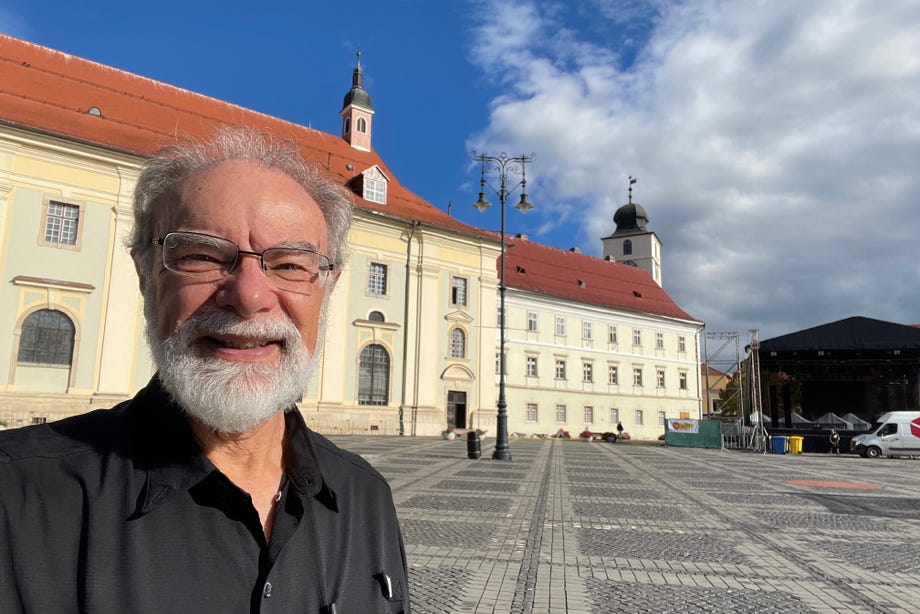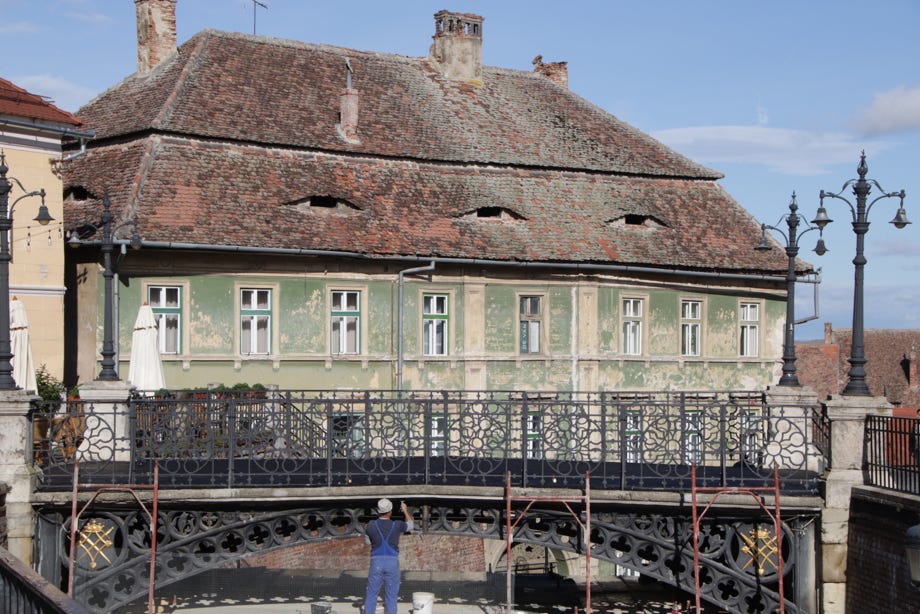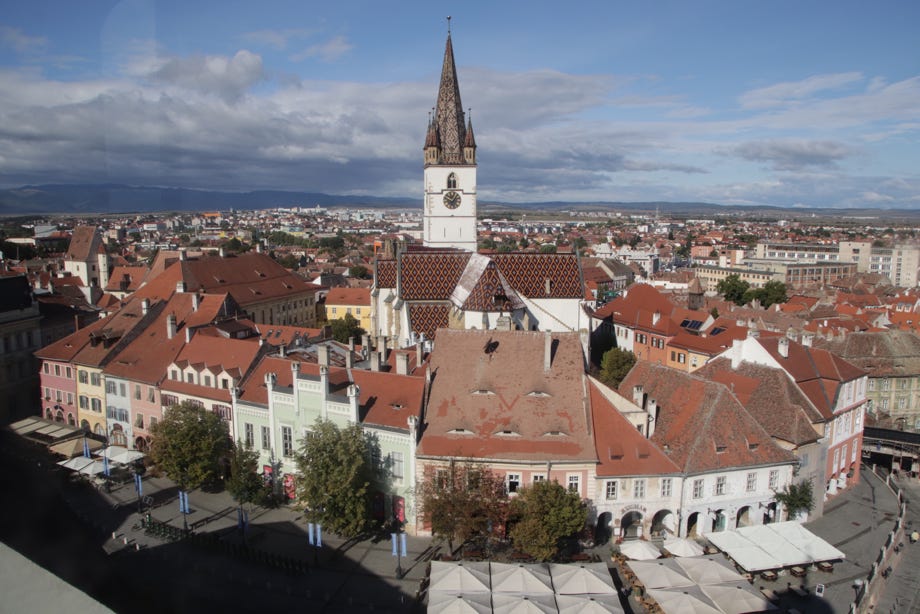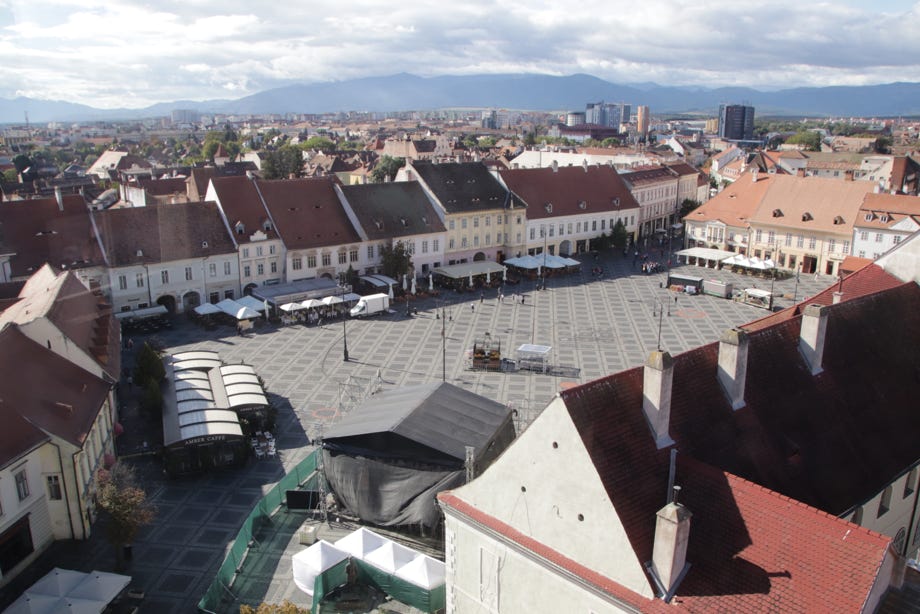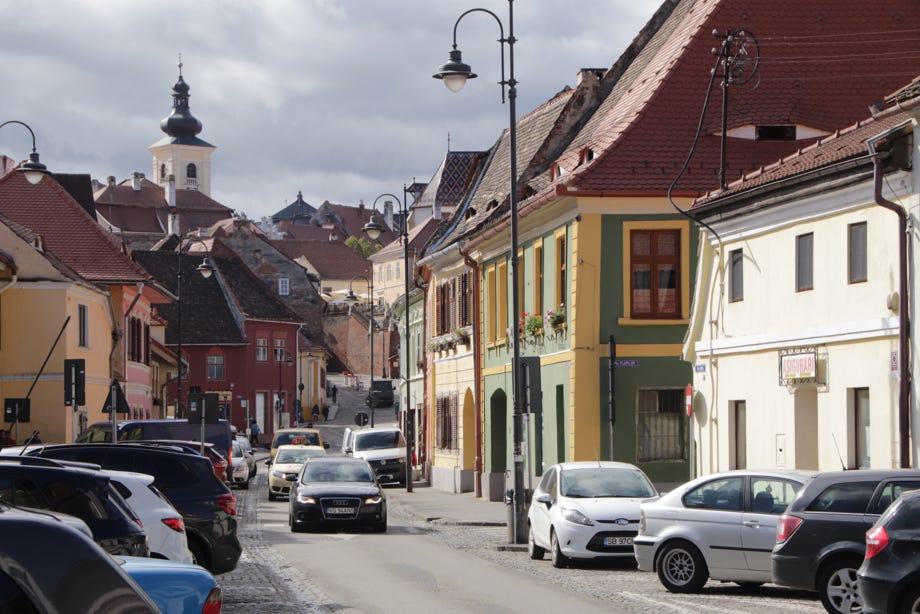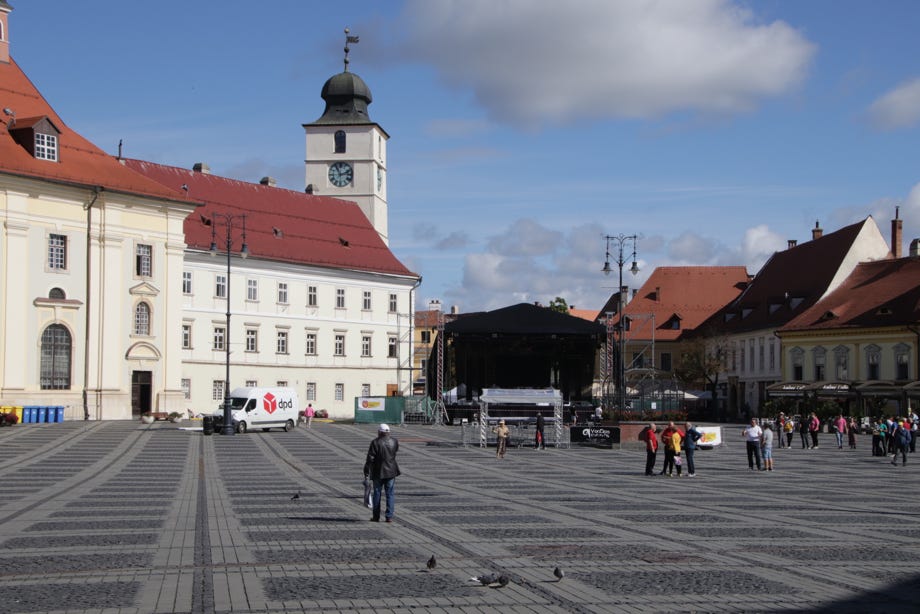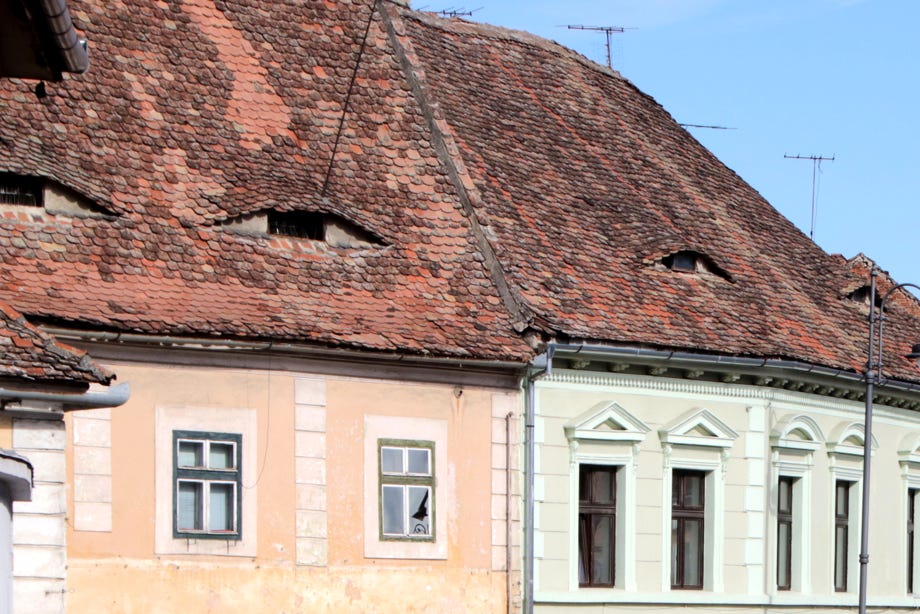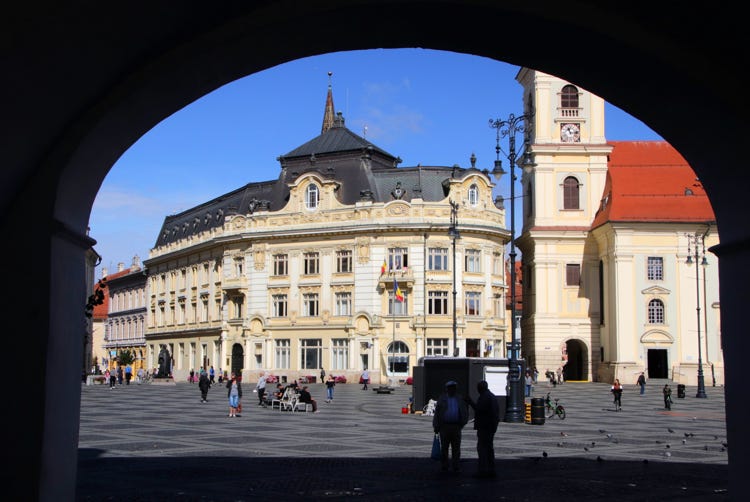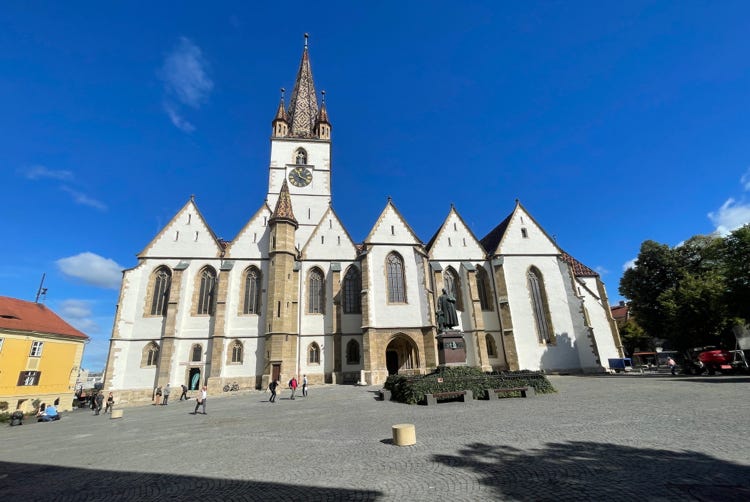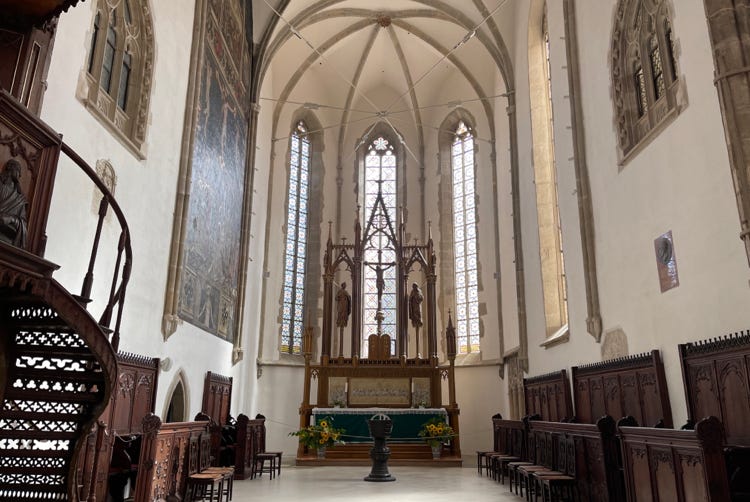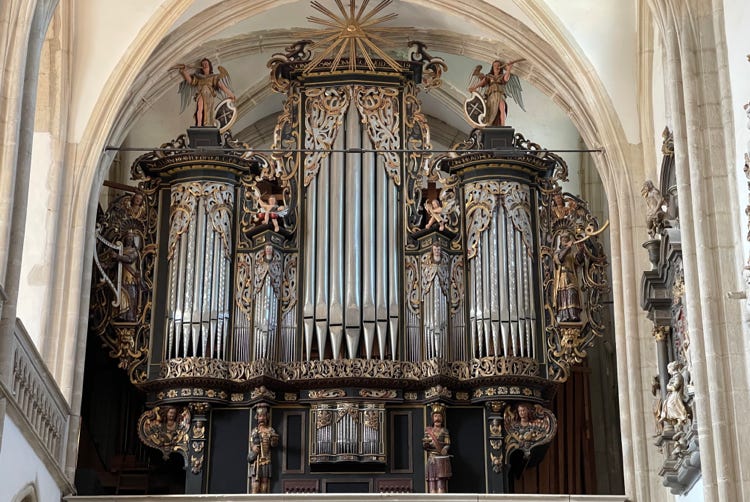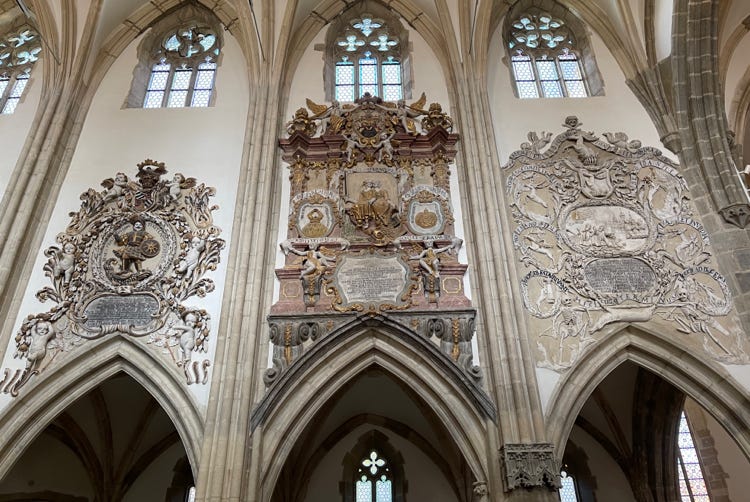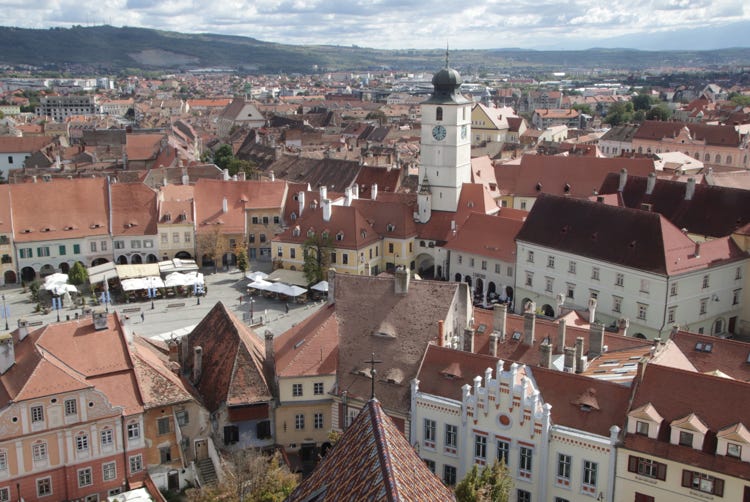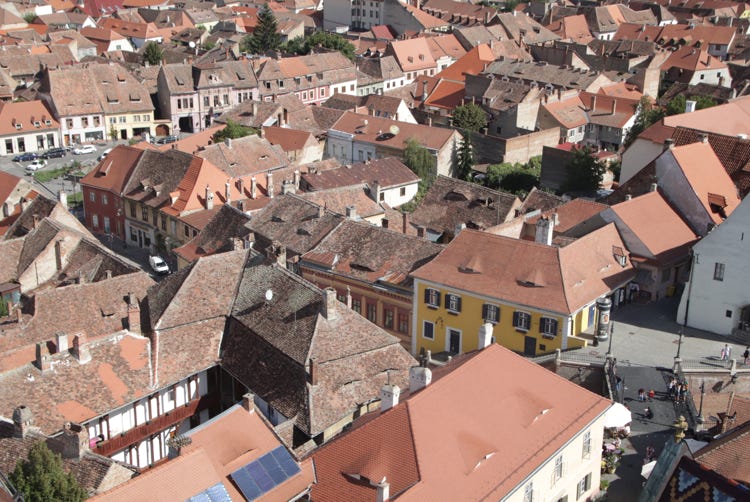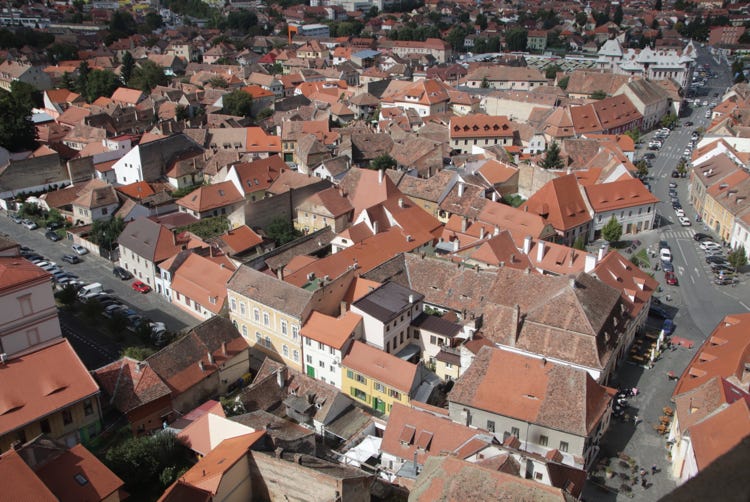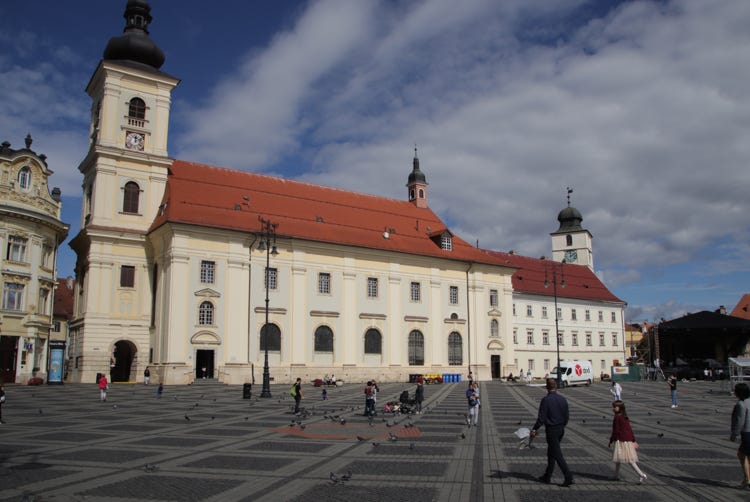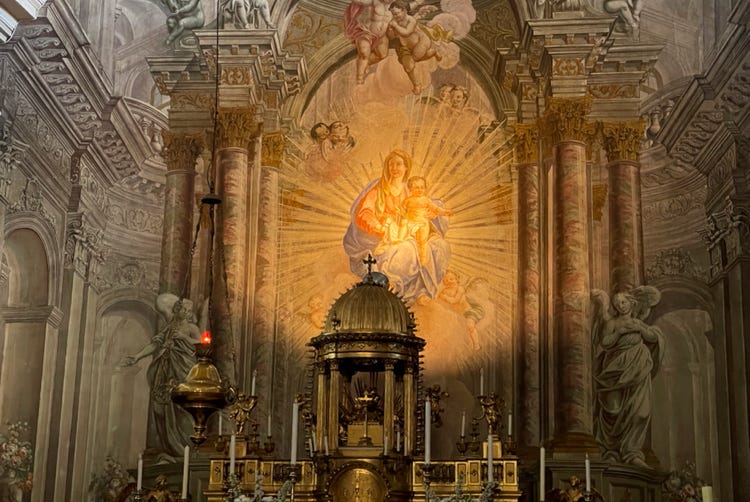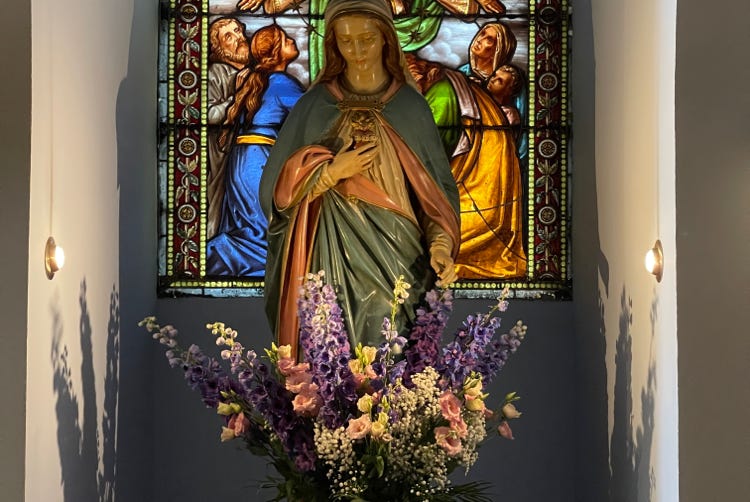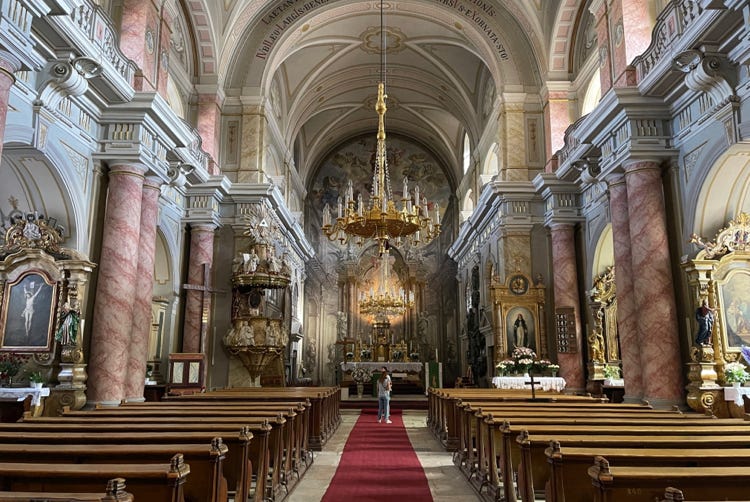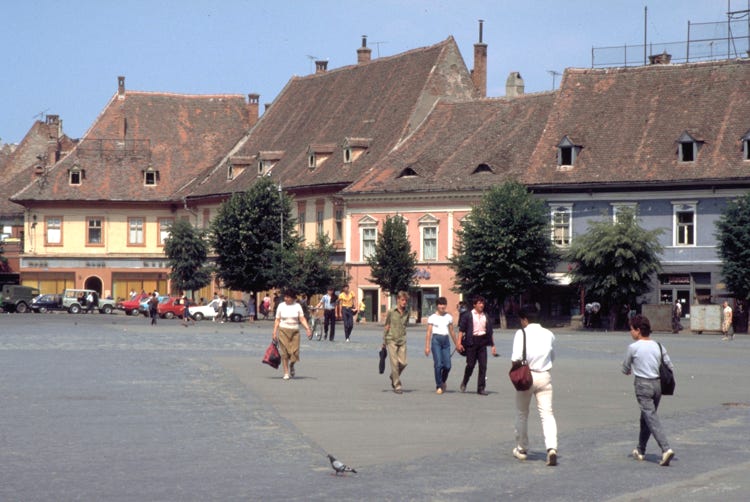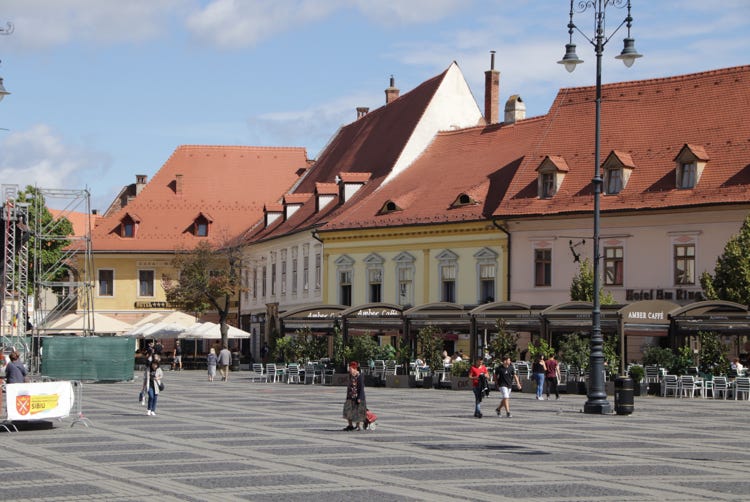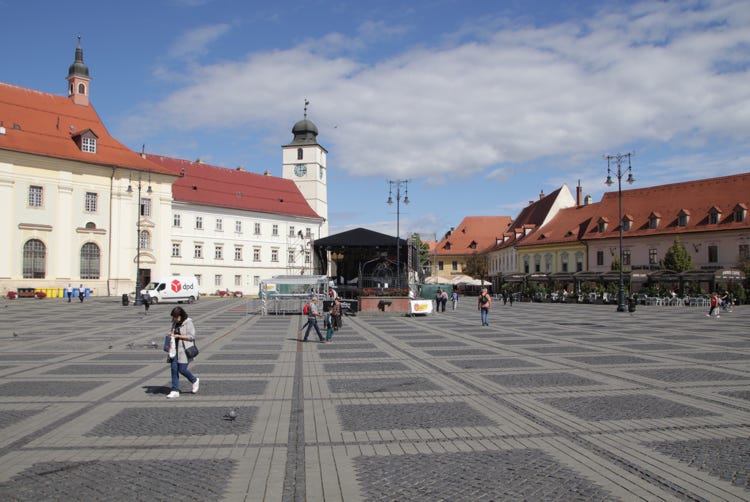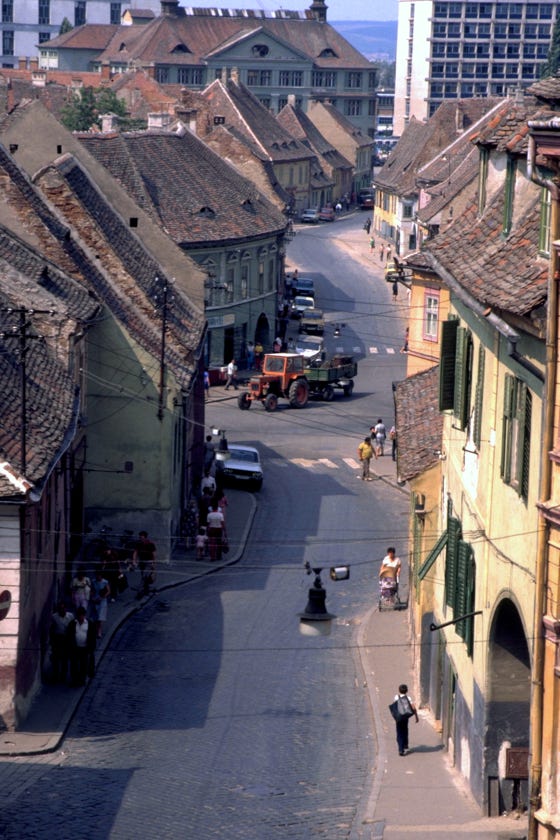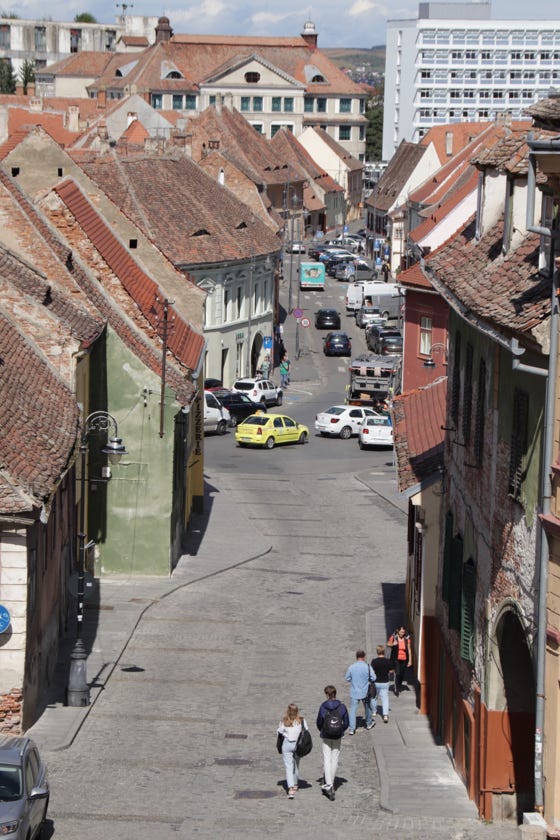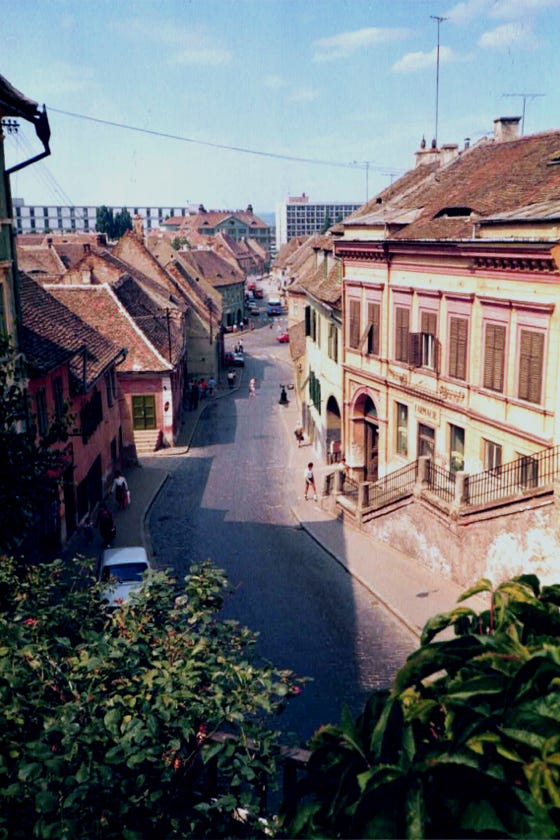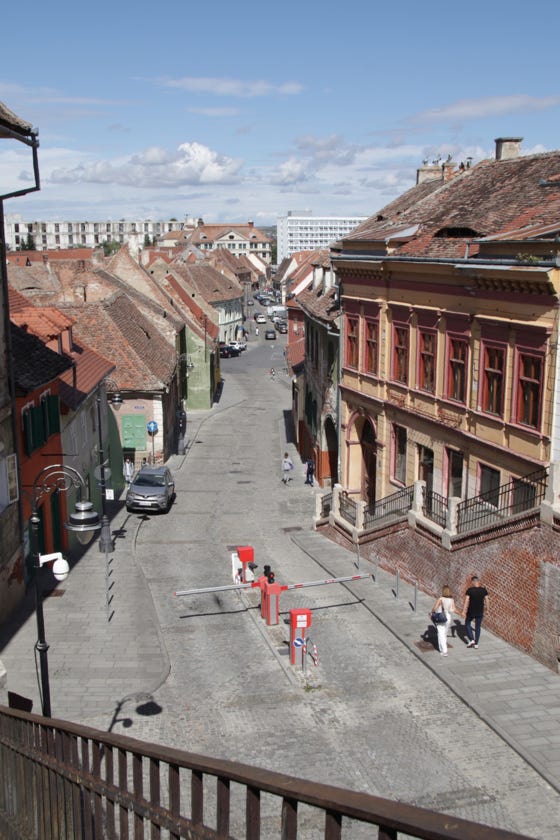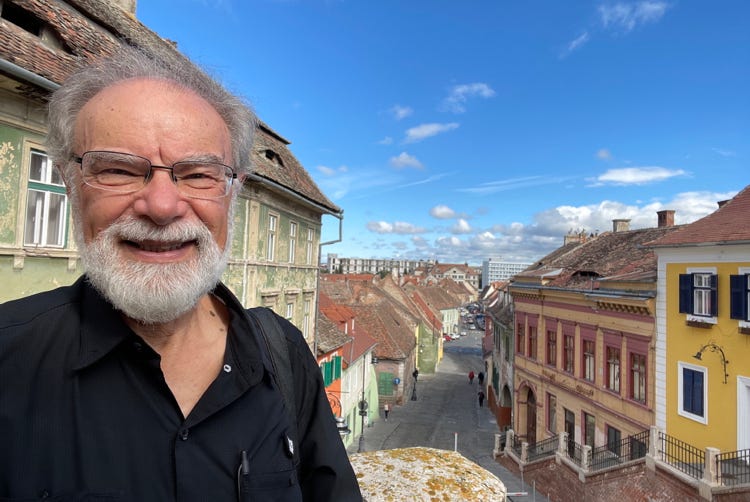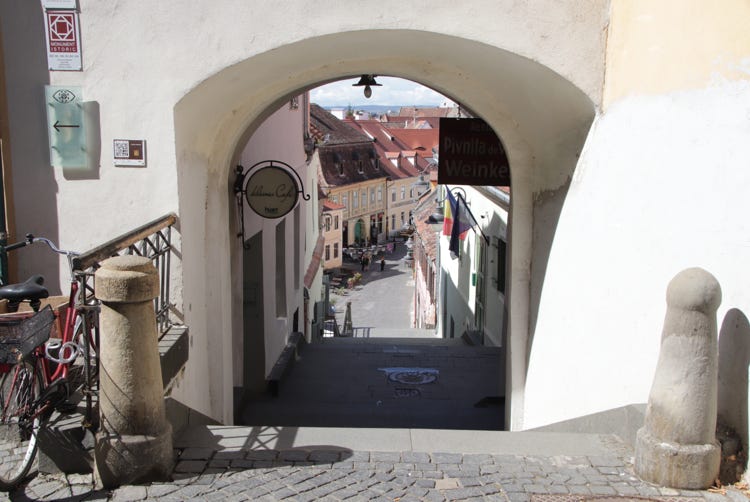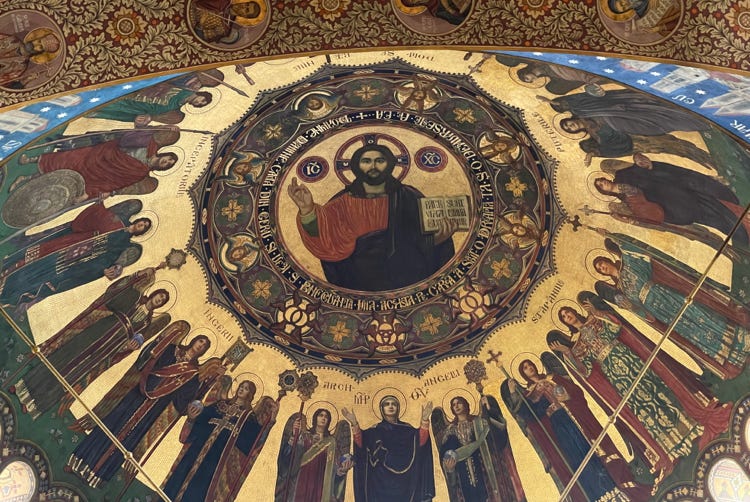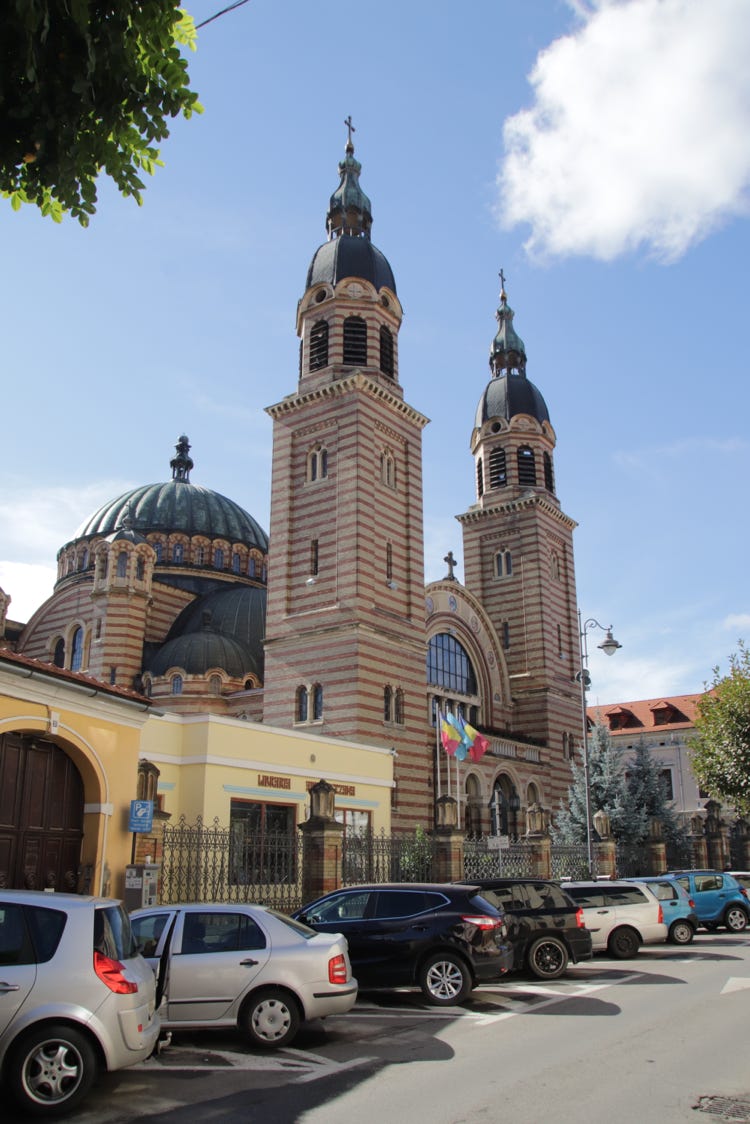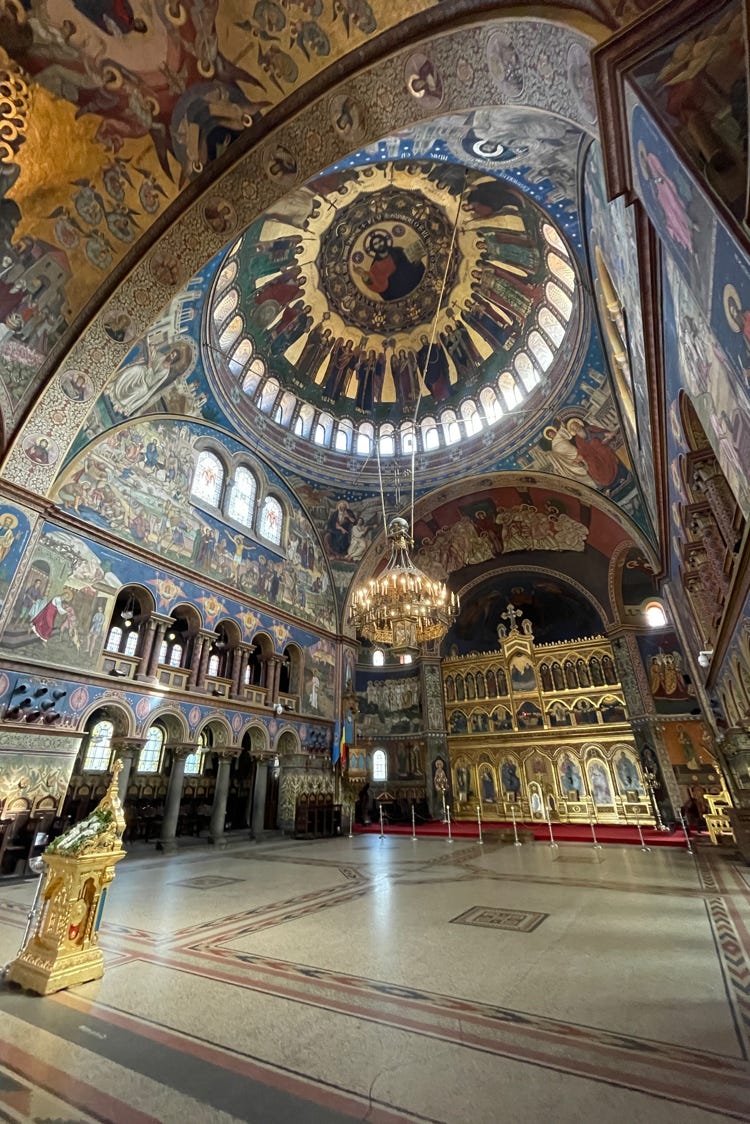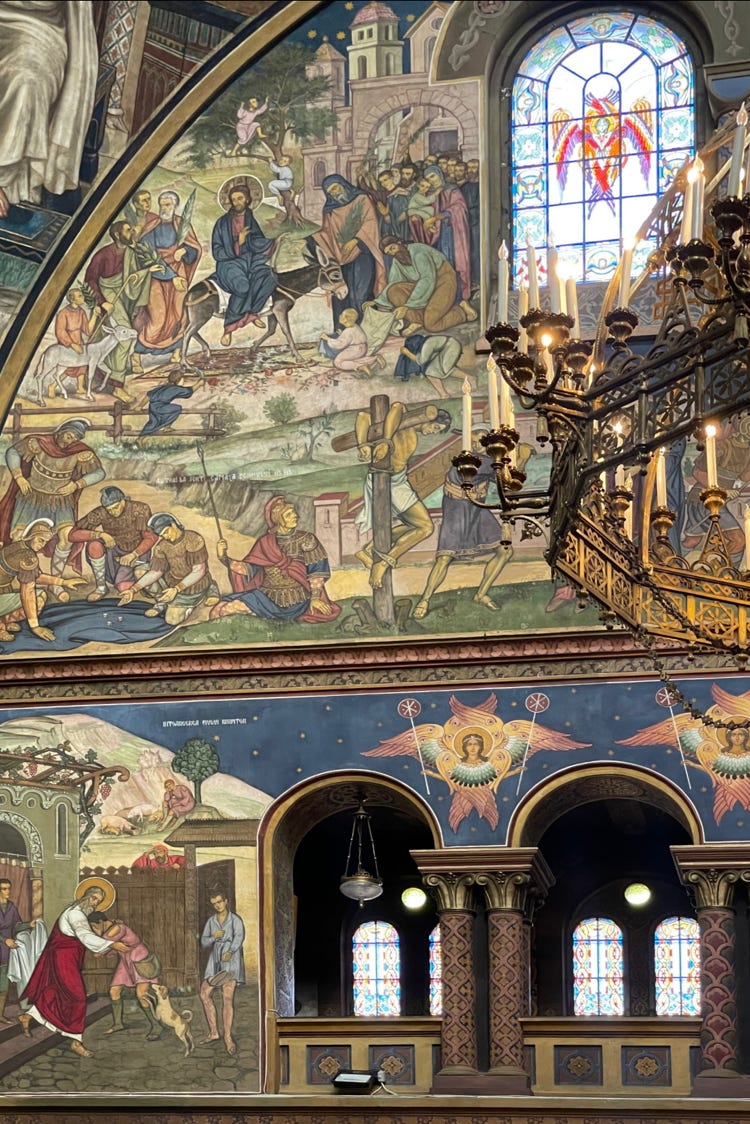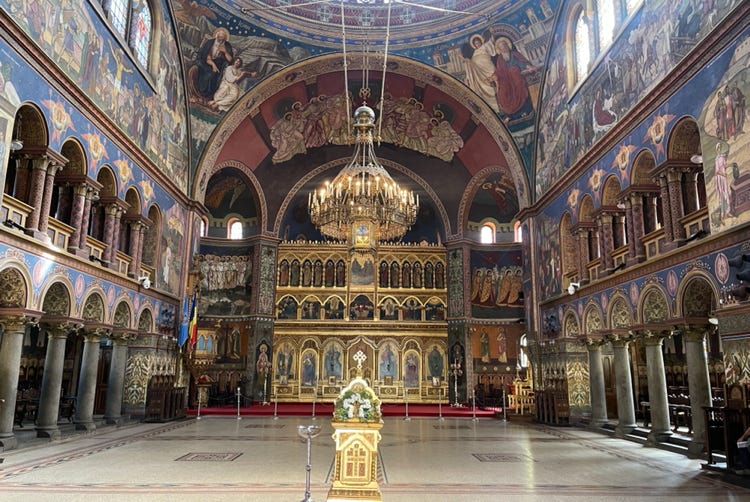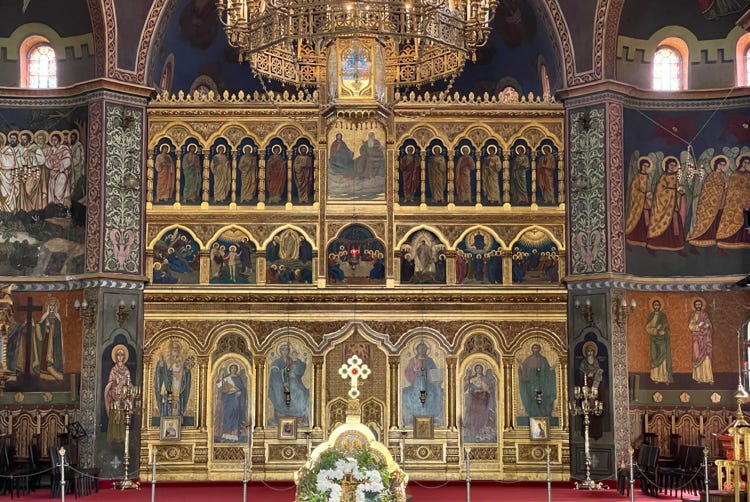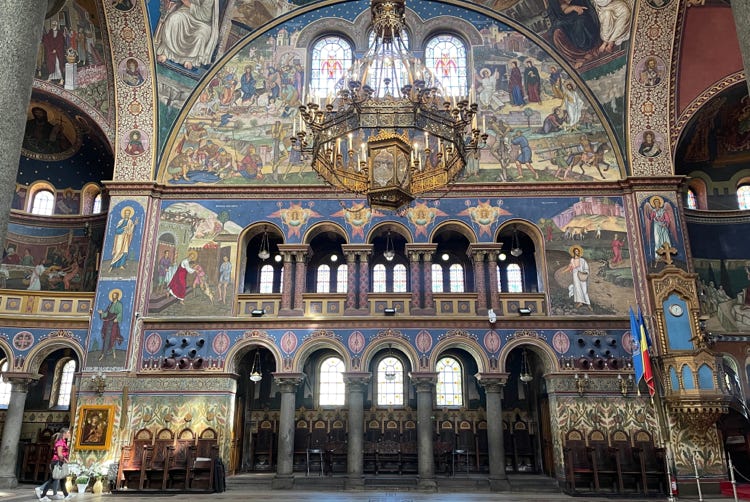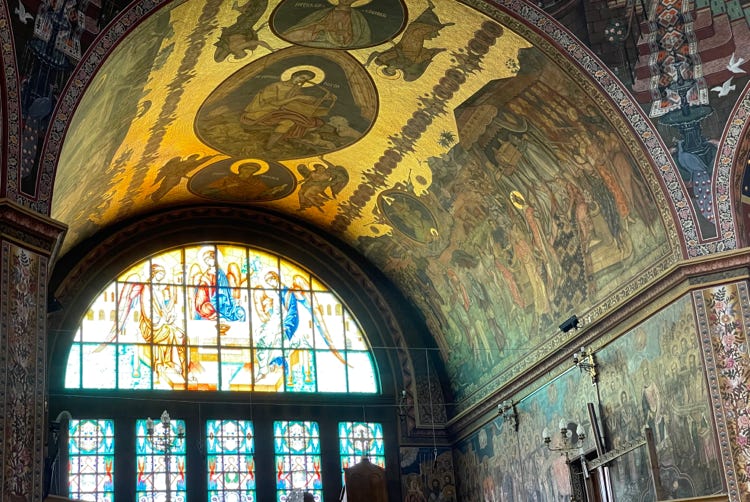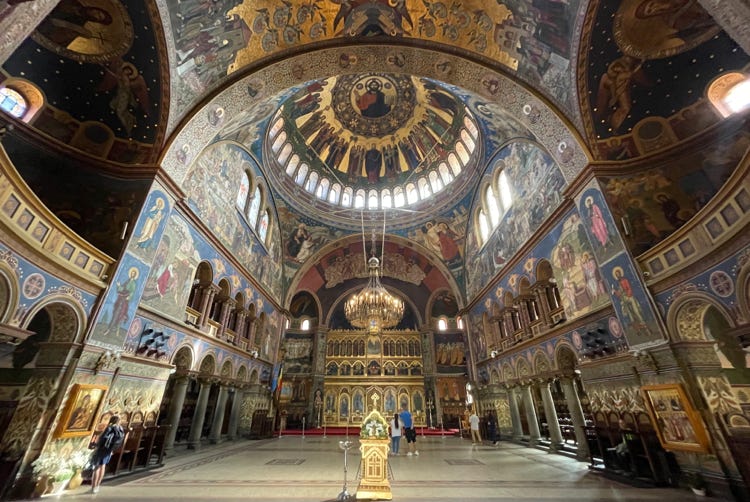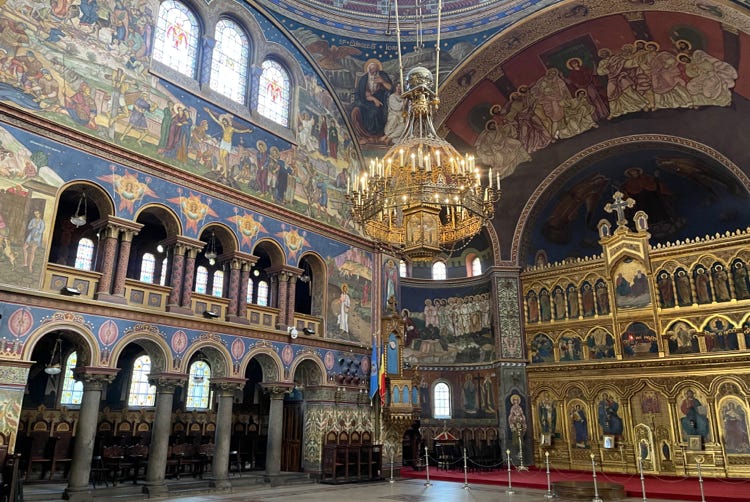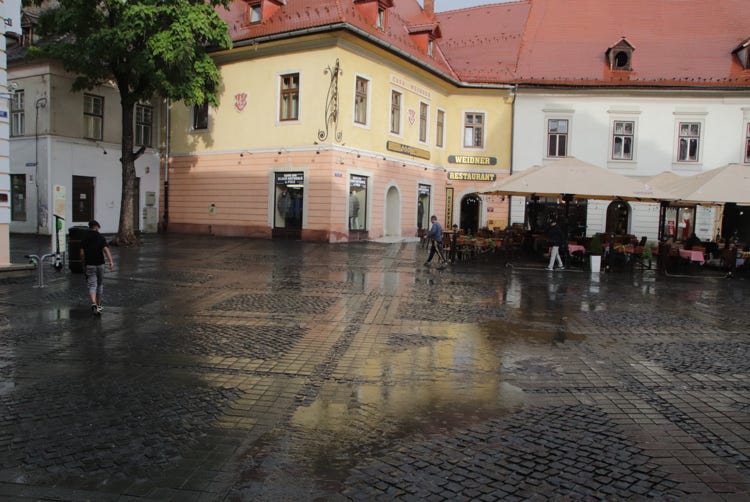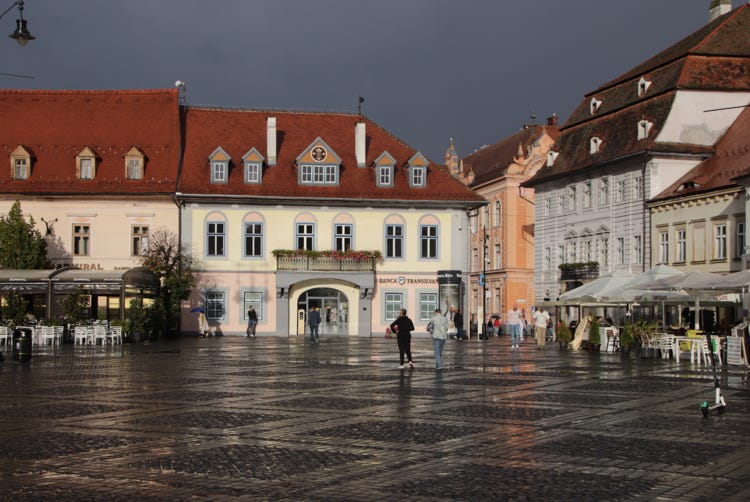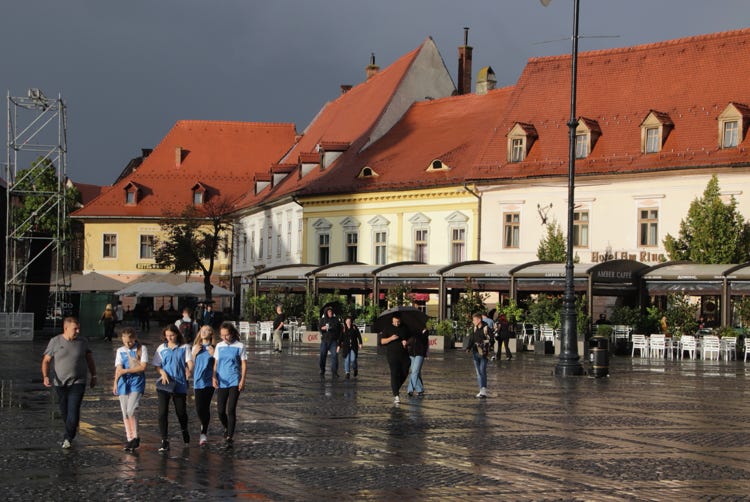

Sibiu

Distance travelled = 15.1 kilometres walking (20,210 steps).
When I planned the itinerary for this trip, I deliberately made today a relatively easy day as a break between two long days of driving (yesterday and tomorrow). As I had breakfast, I thought it may be an even easier day than planned because it was raining, and if the rain continued as forecast, it would limit my capacity to walk around Sibiu.
However, the sun started shining at about 9:30am, and continued shining until grey clouds moved in at about 1:45pm. That gave me just over four hours of precious sunlight, and I made the most of it. I have always thought of photography as “painting with light”, and in the same way that a painter needs good quality paints, I need good quality light for my photography. Fortunately, I had it this morning.
I began by walking into Sibiu’s historic centre. The city’s historic heart focuses on three linked open areas, Piaţa Mare (Main Square), Piaţa Mică (Little Square ) and the smallest and oldest of the three, Piaţa Huet (Huet Square). I started my walk around the city in the magnificent Piaţa Mare that I had explored briefly yesterday evening.
As soon as it opened at 10:00am, I went to Turnul Sfatului (Council Tower) to take in the elevated views in the early clear air while the sun remained shining. The tower was built in the 13th century as part of the city’s fortifications, and then re-built in 1588. Climbing the tower’s 111 steps gave me my first cardio workout for the day, after which I was rewarded with superb views across the old city centre as far as the city’s rural fringes.
Invigorated by the views from the tower, I spent some time wandering through the beautiful streets laneways of the historic central zone, simply soaking up and appreciating the Saxon architecture that provides such clear evidence of the city’s German heritage. After a while I decided to make the first of three church visits for the day, the massive Evangelical (Lutheran) Cathedral. Located on Piaţa Huet, the huge white-fronted, steeple-topped church was built in three phases between 1320 and 1520.
The main body of the church was more elaborate than the Lutheran churches I had visited previously in Romania, and included what is claimed to be Romania’s largest church organ, installed in 1914. Just behind the organ is the body of Mihnea Vodă cel Rău (Prince Mihnea the Evildoer) who was murdered in front of the church in 1510; Prince Mihnea was the son of Vlad Ţepeş (Vlad the Impaler, otherwise known as Dracula).
More exciting than the church interior was a tower that could be climbed, even taller than the Turnul Sfatului at 73 metres (providing a second and even more significant cardio workout for the day). Despite some early wavering, the sunlight persisted for the duration of my tower visit, providing clear views in multiple directions from each of four corners of the tower.
As the sunlight faded, I returned to Piaţa Mare and entered my second church for the day, the baroque Catholic Church. This church was built between 1726 and 1738 and the interior featured a lavish array of bright frescoes and gold decoration.
While I was in Piaţa Mare, I managed to get a better comparative photo of the buildings at the north-eastern corner than I was able to achieve yesterday afternoon; you can see the result below (with the 1987 image framed in red).
I spent some more time wandering through the streets and laneways before heading to the Bridge of Lies (Podul Minciunilor) at the north-west corner of Piaţa Mică. This iron bridge was built in 1859 and is currently being extensively renovated. There are several stories attempting to explain the name. One story is that the name arose in reference to the dishonest merchants who used to meet on the bridge. Another story is that it was the place where young lovers would swear their undying love (or their virginity) to each other. It is said that if you tell a lie while standing on the bridge, it will make a creaking noise. Apparently Nicolae Ceauşescu made a speech while standing on the bridge and survived, although he disliked Sibiu so much that he never returned.
As well as being an interesting place in its own right, the Bridge of Lies was a location where I had taken photos during my 1987 visit, so I took the opportunity of this afternoon’s visit to get some comparative images, which can be seen below).
My third church visit followed as I walked from the Bridge of Lies back through Piaţa Huet and along Strada Mitropoliei to Catedrala Sfânta Trieme (Holy Trinity Cathedral), Sibiu’s Orthodox Cathedral. Built between 1902 and 1904, this is the second largest Orthodox Cathedral in Romania. The interior was absolutely magnificent, and the effort and artistry that have gone into creating the works of art on the walls and high ceilings are absolutely amazing. It was a sublime experience just to sit down on the chairs provided and take in the beauty and the messages of the frescoes that covered every square centimetre of the church’s interior.
As the sky became increasingly overcast, I spent a couple of hours in my hotel room (writing this travel diary). At about 5:00pm, I felt like getting some air in my lungs, so I went out and enjoyed some more semi-aimless walking. At 5:45pm, like everyone else who was outside at the time, I was surprised by the sudden onset of a storm, with substantial rainfall that sent everyone scurrying to find some (all-too-scarce) shelter. A link to a short (18 second) video below shows my view of the storm after I had reached some shelter (beneath the Turnul Sfatului).
Twenty minutes after the heavy rain began, it stopped as suddenly as it had started, and just as surprisingly, the sun emerged for about five minutes, bathing Piaţa Mare in golden light with a dramatic backdrop of dark grey storm clouds. It marked an interesting finish to the day’s exploration of Sibiu.

